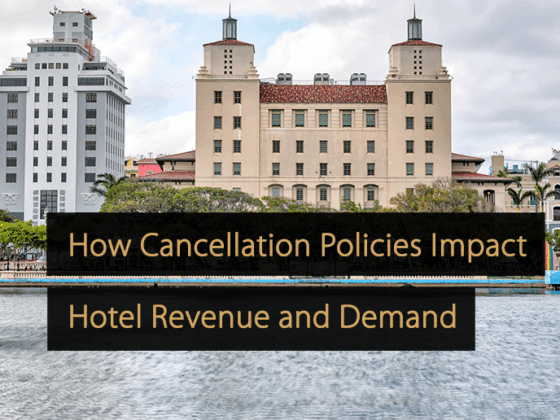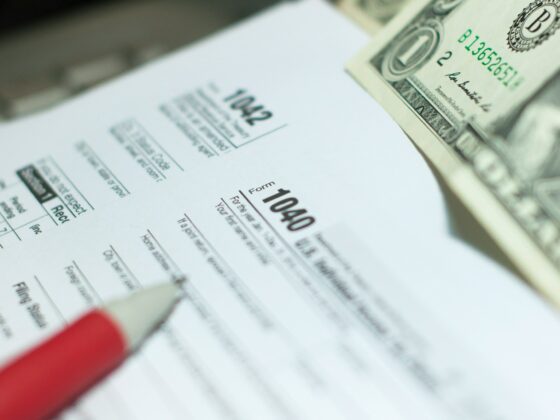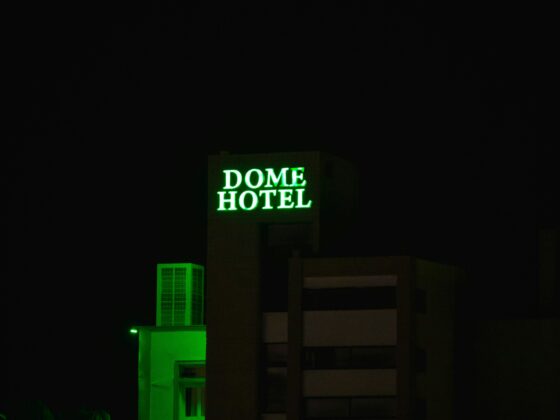
Defining Pricing Strategies
Dynamic pricing is a strategy in which the price of a product or service is adjusted in real time based on various factors such as demand, market conditions, competitor pricing, and other external influences. In the hotel industry, dynamic pricing involves changing room rates based on real-time data inputs to optimize revenue.
Unlike static pricing, where prices are set in advance and remain fixed, dynamic pricing is fluid and can change multiple times daily. This strategy allows hotels to respond quickly to fluctuations in demand, ensuring they can maximize revenue by charging the highest possible rate that guests are willing to pay at any moment. Dynamic pricing is often powered by sophisticated Revenue Management Systems (RMS), which analyze a wide range of data points, including occupancy levels, booking patterns, and external factors like local events or holidays, to determine the optimal pricing for each room in real-time.
By utilizing dynamic pricing, hotels can better match their prices to the current market conditions, increasing their overall profitability while remaining competitive in a rapidly changing environment.
Surge pricing is a dynamic pricing strategy where prices are temporarily increased in response to a sudden spike in demand. The term was popularized by ride-sharing companies, most notably Uber, which introduced surge pricing to manage the supply and demand of rides. During periods of high demand—such as rush hours, inclement weather, or major events—Uber would increase fares to encourage more drivers to come online (increasing supply) while also managing customer demand by charging higher prices to those willing to pay a premium.
Surge pricing in ride-sharing relies on the flexibility of supply—more drivers can be incentivized to offer rides, thereby balancing the market. However, in the hotel industry, the concept operates slightly differently due to the fixed capacity of available rooms. Unlike ride-sharing, where the supply can increase in response to demand, hotels have a finite number of rooms that cannot be expanded in the short term.
In the context of hotels, surge pricing involves raising room rates during periods of exceptionally high demand—such as during conferences, festivals, or large sporting events—when the number of people seeking accommodation exceeds the available supply. While the capacity (number of rooms) remains fixed, the hotel uses surge pricing to maximize revenue by charging higher rates to those willing to pay a premium for limited availability. This approach helps hotels to optimize revenue during peak periods, ensuring that each room is sold at the highest possible rate.
Even though hotels cannot increase their supply, as ride-sharing services can with drivers, surge pricing allows them to make the most of their existing capacity, capitalizing on high-demand situations. The success of this strategy in hotels depends on careful implementation, transparency, and maintaining a balance between profitability and customer satisfaction.
Price skimming involves setting a high initial price for a product or service with the understanding that it may not attract the maximum number of customers but will generate significant revenue from those willing to pay a premium. This strategy can be employed in the hotel industry during high-demand events or periods where the hotel deliberately charges a higher rate, fully aware that not all rooms will be filled at that price. The goal is to maximize total revenue rather than occupancy.
This approach contrasts with traditional surge pricing, which aims to fill as many rooms as possible at higher rates during peak demand. With price skimming, the focus is on revenue per room rather than the total number of rooms sold. Hotels might choose this strategy during events like the Paris Olympics, where demand is high, but rather than aiming for full occupancy, they prioritize securing the highest possible revenue per room from guests willing to pay premium prices.
During the Paris Olympics, for example, some hotels charged significantly higher rates, resulting in a slower increase in occupancy but a dramatic increase in total room revenue. The hotels understood that while not all rooms would be filled at these elevated rates, the sold rooms would contribute to a substantial overall revenue gain.
Key Characteristics of Price Skimming in Hotels:
- High Initial Prices: Hotels set room rates significantly higher than usual, targeting guests who are less price-sensitive and willing to pay a premium for convenience, location, or exclusivity.
- Lower Occupancy Rates: The hotel expects and accepts that not all rooms will be sold at these high rates.
- Maximized Revenue per Room: The focus is on increasing the total revenue by selling fewer rooms at higher prices rather than filling all rooms at lower rates.
This strategy is particularly effective when the perceived value of the stay is high, such as during major events or in luxury markets where exclusivity is a significant factor in pricing.
Dynamic Pricing Mechanisms: Incorporating Dynamic Pricing, Surge Pricing, and Price Skimming
Hotel pricing is often called dynamic pricing, especially when associated with sophisticated Revenue Management Systems (RMS). These systems are designed to analyze a wide range of real-time data points, enabling hotels to adjust room rates almost instantaneously based on market conditions. The core objective of dynamic pricing is to optimize revenue by aligning room rates with fluctuating demand, ensuring that as many rooms as possible are sold on any given day. After all, an empty room generates no revenue and represents a missed opportunity for the hotel.
How RMS Operates: RMSs function efficiently under regular demand scenarios by utilizing historical data to identify booking patterns and predict future trends. The principle behind these systems is relatively straightforward:
- Rate Adjustments Based on Pick-Up: If a hotel’s pick-up rate (the rate at which reservations are made) is strong, the RMS will automatically increase room rates to capitalize on the high demand. Conversely, if the pick-up is slow, the system will lower rates to attract more bookings.
- Balancing Act: The RMS continuously adjusts rates as long as rooms are available to sell, finding the optimal price to attract buyers. Some systems prioritize historical patterns to forecast demand, while others emphasize current on-the-books data and pick-up trends. Despite these differences, the overarching goal is to maximize room revenue by fully utilizing the hotel’s capacity.
Incorporating Surge Pricing: While RMSs effectively manage regular demand fluctuations, they are not inherently equipped to handle surge pricing scenarios. Surge pricing involves significant rate increases during periods of exceptionally high demand—such as during major events or unexpected booking spikes—requiring a more nuanced understanding of market dynamics that RMSs alone cannot provide. The main limitation of RMSs is their inability to accurately gauge the strength of demand far in advance, mainly when there are few reservations or the pick-up is initially slow.
Human Intervention and Expertise: This is where human intervention becomes crucial. A clever and experienced hotel revenue manager plays a key role in identifying opportunities for surge pricing. Unlike RMSs, which rely heavily on data and algorithms, a seasoned revenue manager can assess market conditions, anticipate demand surges, and adjust pricing strategies accordingly. This combination of technology and human expertise ensures that the hotel is reactive and proactive in capturing revenue during peak periods.
For example, an RMS might not fully recognize the potential impact of a major citywide event, such as the Olympics, if bookings are slow in the early stages. However, a skilled revenue manager, aware of the event’s significance and the likelihood of last-minute bookings, can manually adjust rates upwards well in advance, ensuring the hotel capitalizes on the impending surge in demand.
Understanding Price Skimming: Beyond dynamic and surge pricing, there is a third strategy known as price skimming, where a hotel deliberately sets higher rates with the understanding that not all rooms will be sold at these prices. Often used during events like the Olympics, this approach focuses on maximizing total room revenue rather than achieving full occupancy. The hotel charges premium rates, targeting guests willing to pay more for the perceived value, exclusivity, or convenience, even if this results in a slower increase in occupancy.
For instance, some hotels adopted a price skimming strategy during the Paris Olympics by significantly raising rates. While this led to a slower growth in occupancy, the total room revenue increased dramatically. The hotels knew that not all rooms would be filled at these elevated rates, but the revenue generated from the sold rooms more than compensated for the lower occupancy.
While RMSs are invaluable tools for managing day-to-day pricing and regular demand patterns, they must be complemented by human insight and strategic thinking to implement surge pricing and price skimming effectively. This synergy between technology and human expertise ultimately allows hotels to maximize revenue during predictable and unpredictable demand spikes, ensuring they capitalize on every opportunity to enhance profitability.
Real-World Example: Paris Olympics – A Pricing Skimming Success Story
The Paris 2024 Olympics showcased surge pricing, demonstrating how hotels can effectively leverage this strategy to maximize revenue during periods of extraordinary demand. During the second week of the Games, hotels across Paris experienced a remarkable surge in revenue per available room (RevPAR), which soared by 195.9% compared to the same period the previous year. This followed a record-breaking gain of 207.2% in the event’s first week. The average daily rate (ADR) also saw a significant boost, increasing by 137.8%, while occupancy rates rose by 16.9 percentage points, resulting in an overall occupancy rate of about 84% in inner Paris.
This case is particularly noteworthy because despite not being completely sold out, Parisian hotels strategically utilized pricing to skim the market, capitalizing on the heightened demand brought about by the Olympics. This approach allowed hotels to maximize their revenue without needing full occupancy, demonstrating the power of dynamic pricing when correctly applied.
The impact of pricing skimming during the Olympics was especially evident on Friday night, which produced the highest RevPAR of the week at an impressive $735. Sunday also saw a massive increase in RevPAR, rising by 224.7%. This increase in revenue was not confined to central Paris; the surrounding Île-de-France region also experienced substantial gains, with a 169.1% year-over-year increase in RevPAR driven by both ADR and occupancy growth. CoStar, a leading provider of hotel market data, published all data.
This example illustrates how price skimming allowed Parisian hotels to extract maximum revenue during one of the world’s most significant events, even without reaching full occupancy. By dynamically adjusting room rates in response to the surging demand, hotels could capture significant revenue that might have otherwise been left on the table.
Moreover, reports from Paris suggest that everything operated smoothly during the Olympics, and the city was not overcrowded. This outcome further emphasizes the effectiveness of price skimming in managing demand while ensuring a positive guest experience. The success of Parisian hotels during the Olympics showcases the potential of price skimming as a powerful tool for revenue management, particularly during high-profile events where demand can far exceed normal levels.
Benefits and Challenges of Price Skimming
Capitalizing on High-Demand Periods
During major events such as citywide conferences, festivals, or international sporting events like the Olympics, demand for hotel rooms often surges dramatically. However, price skimming allows hotels to capitalize on these periods instead of aiming for full occupancy by deliberately setting higher rates, even if it means not filling all available rooms. This strategy maximizes total revenue by targeting guests willing to pay a premium for exclusive access, superior amenities, or proximity to the event. The focus is securing the highest possible revenue per room rather than simply maximizing occupancy.
Managing Customer Perception
While price skimming can lead to significant revenue gains, it also presents challenges, particularly in managing customer perception. Guests may view the high rates as unfair or feel they are being taken advantage of, especially if they do not understand the rationale behind the pricing strategy.
Transparency and Communication: One of the most effective ways to address customer concerns is through transparency and clear communication. Hotels must ensure that guests understand the reasoning behind the higher rates, emphasizing that these prices reflect the premium nature of the offering and the high demand during specific periods.
For example, hotels can proactively communicate that rates may be higher due to exclusivity and limited availability during peak events or seasons. This can be conveyed through booking, on the hotel’s website, or via confirmation emails. Providing this context helps manage expectations and can make guests more comfortable with the pricing, reducing the likelihood of negative reactions.
Perceived Value: In addition to transparency, it is crucial to emphasize the value provided at these higher price points. Hotels can highlight the unique benefits of staying at their property during these high-demand periods, such as exclusive event access, enhanced amenities, or personalized services. By focusing on the exceptional experience offered, hotels can justify the higher rates and improve guest satisfaction, even when prices are elevated.
Balancing Act
One of the critical challenges of price skimming is finding the right balance between maximizing revenue and maintaining competitiveness. While charging higher rates can significantly boost profitability, there is always the risk of alienating or driving price-sensitive customers to competitors, especially if the perceived value does not justify the price increase.
Market Sensitivity: To avoid pricing themselves out of the market, hotels must remain attuned to their competitive landscape. This involves continuously monitoring competitor rates and ensuring their pricing strategy aligns with market conditions. Guests may opt to book elsewhere if nearby hotels offer similar or the same generic accommodations at lower rates, resulting in missed revenue opportunities.
Ongoing Monitoring: Ongoing monitoring and flexibility are key to achieving the right balance. Revenue managers should regularly review market data, including competitor pricing, booking trends, and occupancy levels, and adjust rates as necessary. This allows hotels to remain competitive while capitalizing on high-demand periods through strategic price skimming. Responding to market shifts ensures the hotel can optimize revenue without alienating potential customers or sacrificing long-term loyalty.
In summary, while price skimming can be a highly effective strategy for maximizing revenue during peak demand periods, it requires careful consideration of guest perception and market dynamics. Hotels can successfully implement price skimming without compromising their competitive edge or customer satisfaction by focusing on transparency, value communication, and ongoing market monitoring.
Best Practices for Implementing Price Skimming
To effectively implement price skimming, hotels must adopt a data-driven approach. This requires access to real-time insights and a deep understanding of the factors influencing guest behavior and demand. By leveraging data strategically, hotels can set premium rates that maximize revenue while still appealing to the right audience. Here’s how to do it:
Target the Right Audience for the Hotel
Price skimming is most effective when a hotel targets the right audience—guests willing to pay a premium for exclusivity, convenience, or luxury. To identify and target this audience, hotels must analyze guest data to understand who their ideal customers are and what they value most.
Data-Driven Audience Segmentation: Using guest profiles, booking behavior, and demographic information, hotels can segment their audience into different categories based on their willingness to pay, preferences, and behavior. For example, luxury travelers attending a significant event may be less price-sensitive and more likely to value proximity, exclusive services, or upscale amenities. By identifying these segments, hotels can tailor their marketing and pricing strategies to attract the right guests likely to book at higher rates.
Personalized Marketing: With a clear understanding of their target audience, hotels can create customized marketing campaigns emphasizing their offerings’ unique benefits and exclusivity. This approach ensures that price skimming is aligned with the expectations and desires of the right customers, increasing the likelihood of successful bookings at premium rates.
Integrate All Data Sources to Understand Guest Purchasing Behavior
Understanding guest purchasing behavior is crucial for setting effective price skimming strategies. Hotels must integrate data from all available sources, including direct bookings, third-party platforms, and guest interactions, to comprehensively view how guests make booking decisions.
Centralized Data Management: Platforms like Demand Calendar can help hotels centralize data from various sources, providing a unified view of guest behavior. This includes tracking how guests interact with the hotel’s website, how they respond to marketing campaigns, and what factors influence their booking decisions. By having all this information in one place, hotels can identify patterns and trends in purchasing behavior.
Behavioral Insights: Integrated data allows hotels to understand the entire guest journey, from the initial search to the final booking. For example, hotels can analyze how far in advance guests typically book, what types of promotions they respond to, and what amenities or services are most appealing. These insights can inform pricing strategies by highlighting the factors that drive booking decisions, enabling hotels to adjust their rates and offerings to match guest expectations during high-demand periods.
Dynamic Adjustments Based on Behavior: With a comprehensive understanding of guest behavior, hotels can make dynamic pricing adjustments that reflect real-time demand. Suppose data shows that guests are more likely to book at a certain price point or are influenced by specific offers. In that case, hotels can use this information to set skimming prices that maximize revenue without deterring potential customers.
Use Analytics and Historical Data for Forecasting
Accurate forecasting is essential for implementing a successful price skimming strategy. By leveraging advanced analytics and historical data, hotels can predict future demand and adjust their pricing strategies accordingly.
Historical Data Analysis: Historical data provides valuable insights into how similar events or seasons have impacted demand in the past. By analyzing this data, hotels can forecast how upcoming events or periods of high demand might affect booking patterns, occupancy rates, and ADR. For example, if a previous event led to a significant increase in bookings at a specific price point, the hotel can anticipate similar behavior and set rates accordingly.
Predictive Analytics: Advanced analytics tools can process vast amounts of historical and real-time data to predict future trends. These tools identify patterns that might not be immediately obvious, such as the impact of external factors like weather or economic conditions on guest behavior. By leveraging predictive analytics, hotels can set skimming prices more closely aligned with expected demand, ensuring they capture maximum revenue during peak periods.
Proactive Rate Adjustments: With accurate forecasts, hotels can adjust their rates well before high-demand periods. This approach allows them to secure bookings at premium rates before demand peaks, reducing the risk of last-minute price adjustments that might not fully capitalize on the potential for higher revenue. By accurately forecasting demand, hotels can optimize their price skimming strategy to ensure they are always ahead of the market.
By becoming data-driven and leveraging insights from audience targeting, integrated data sources, and advanced analytics, hotels can implement price skimming strategies that maximize revenue while appealing to the right guests. With platforms like Demand Calendar, hotels can centralize their data and gain the insights needed to make informed pricing decisions, ensuring that their price skimming strategy is effective and responsive to market dynamics.
Conclusion
Price skimming has become an increasingly valuable strategy for hotels looking to maximize revenue during high-demand periods. However, its successful implementation requires a careful balance between profitability and maintaining positive guest experiences. Unlike surge pricing, which may focus on responding to immediate demand spikes, price skimming deliberately sets higher rates to target premium segments of the market. This strategy can significantly boost revenue, but it must be executed with transparency and a deep understanding of guest perceptions to avoid potential backlash.
Understanding the mechanics of price skimming—its purpose, benefits, and challenges—empowers hotels to implement this strategy effectively. By embracing best practices such as leveraging advanced technology, strategically using data, and maintaining flexibility, hotels can fully harness the power of price skimming to enhance their bottom line. However, this should never come at the expense of guest satisfaction or long-term market competitiveness. Price skimming can lead to substantial revenue gains with the right approach while preserving a hotel’s reputation and guest loyalty.
Takeaways
- Leverage Technology: Invest in robust Revenue Management Systems (RMS) that can analyze real-time data and enable strategic price adjustments to capitalize on high-demand periods.
- Prioritize Transparency: Communicate the reasons for higher prices to guests, ensuring they understand the value they receive and maintaining their trust.
- Stay Agile: Continuously monitor market conditions and be ready to adjust pricing strategies as needed to remain competitive while optimizing revenue opportunities.






